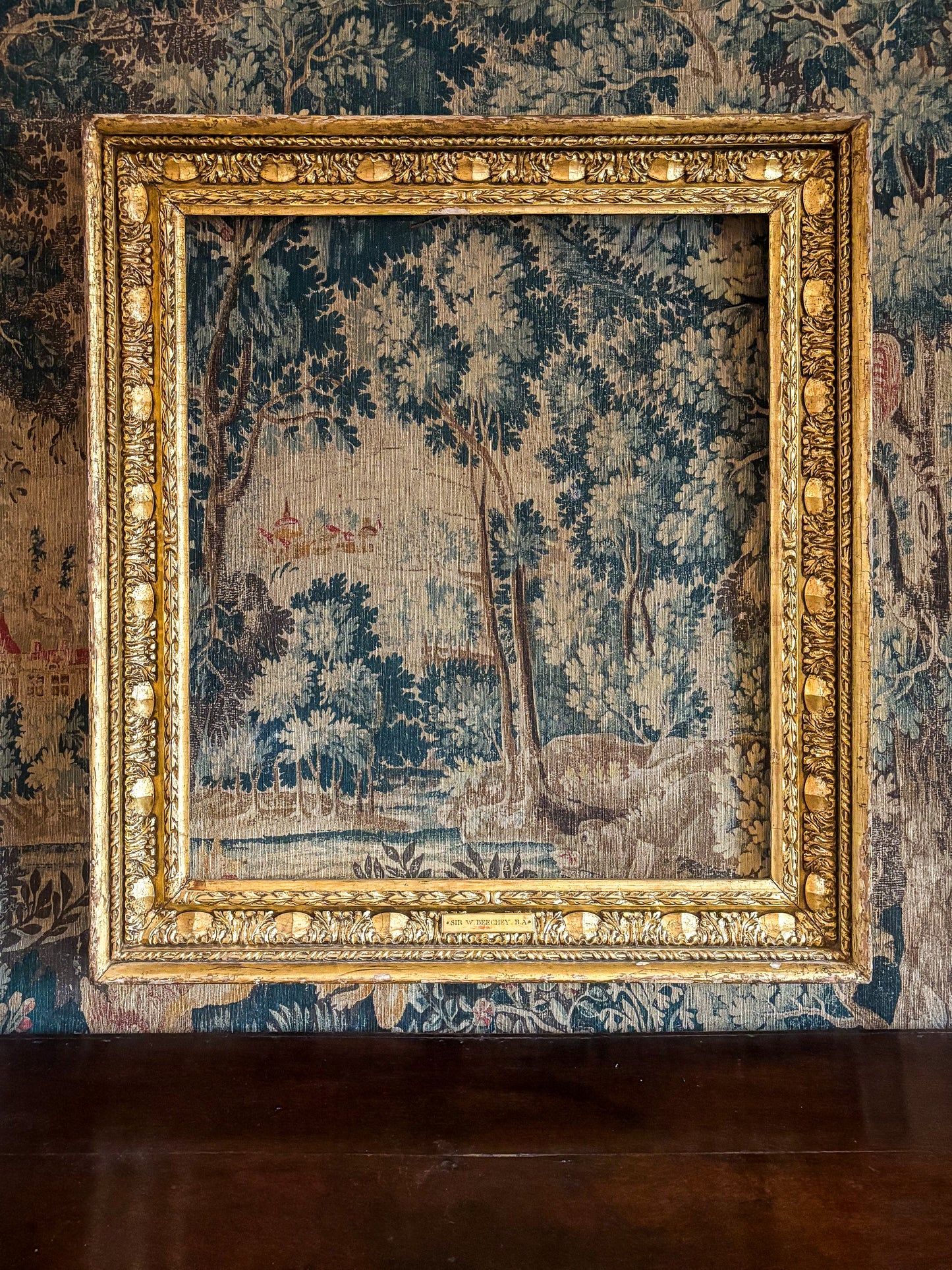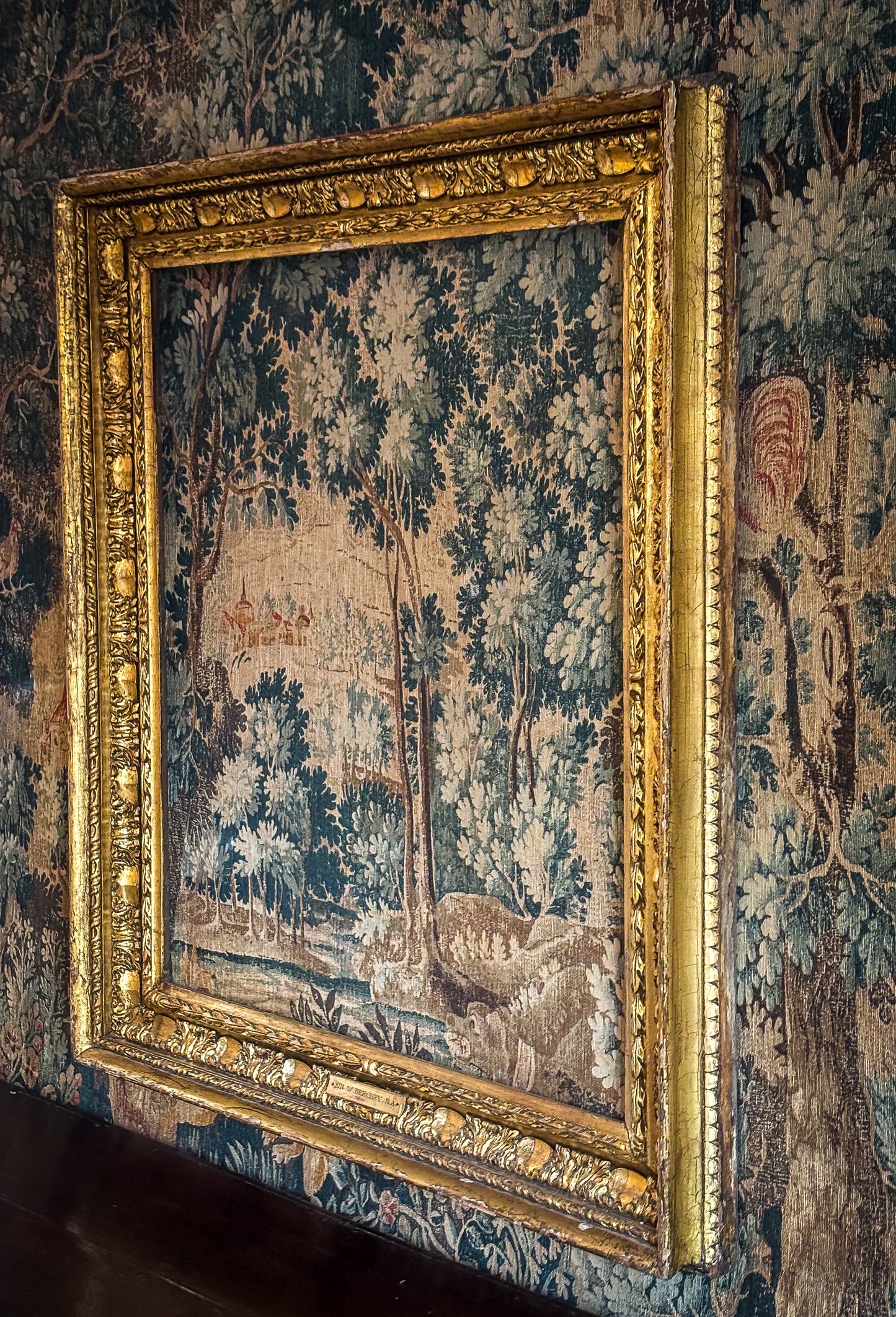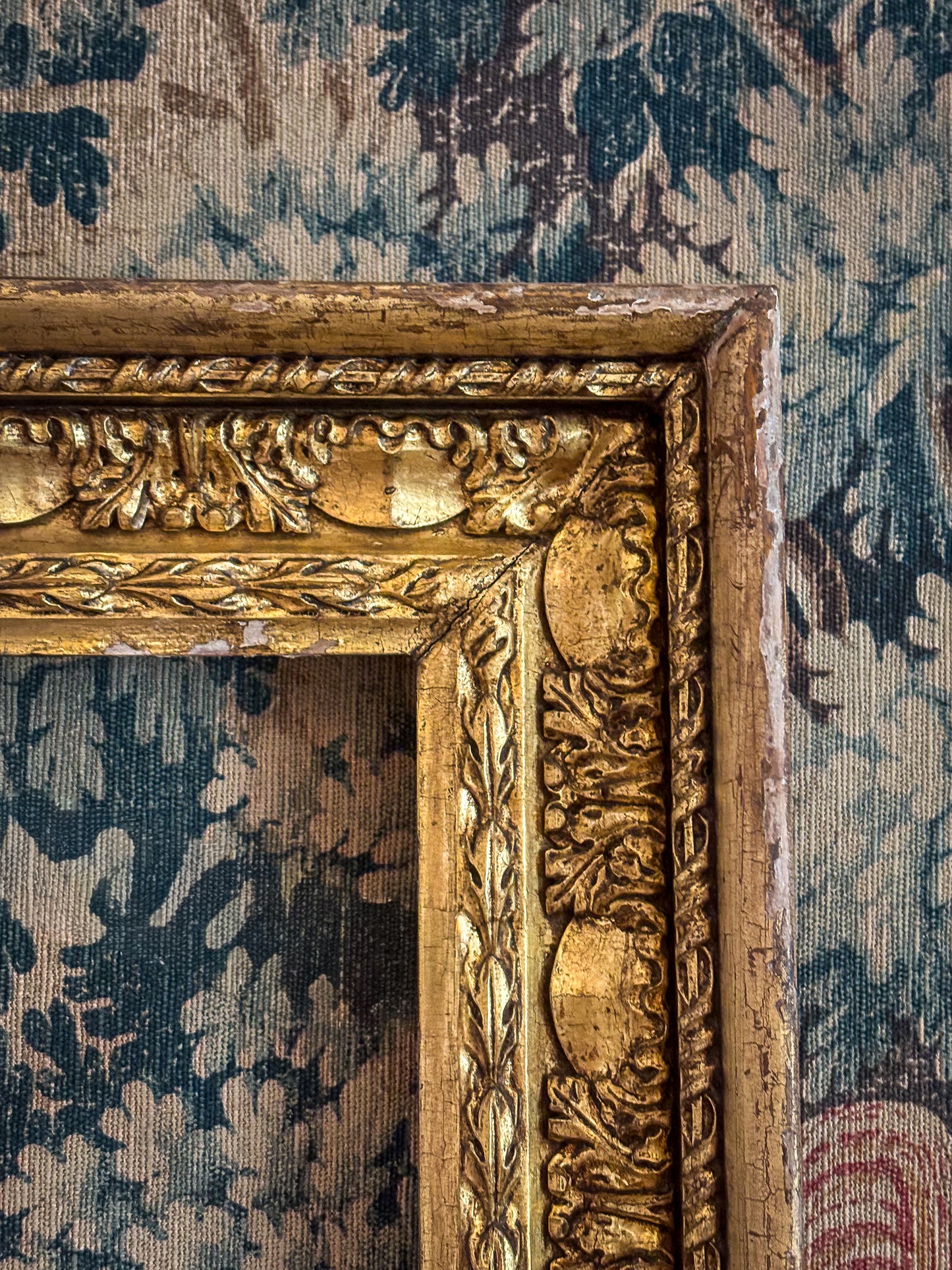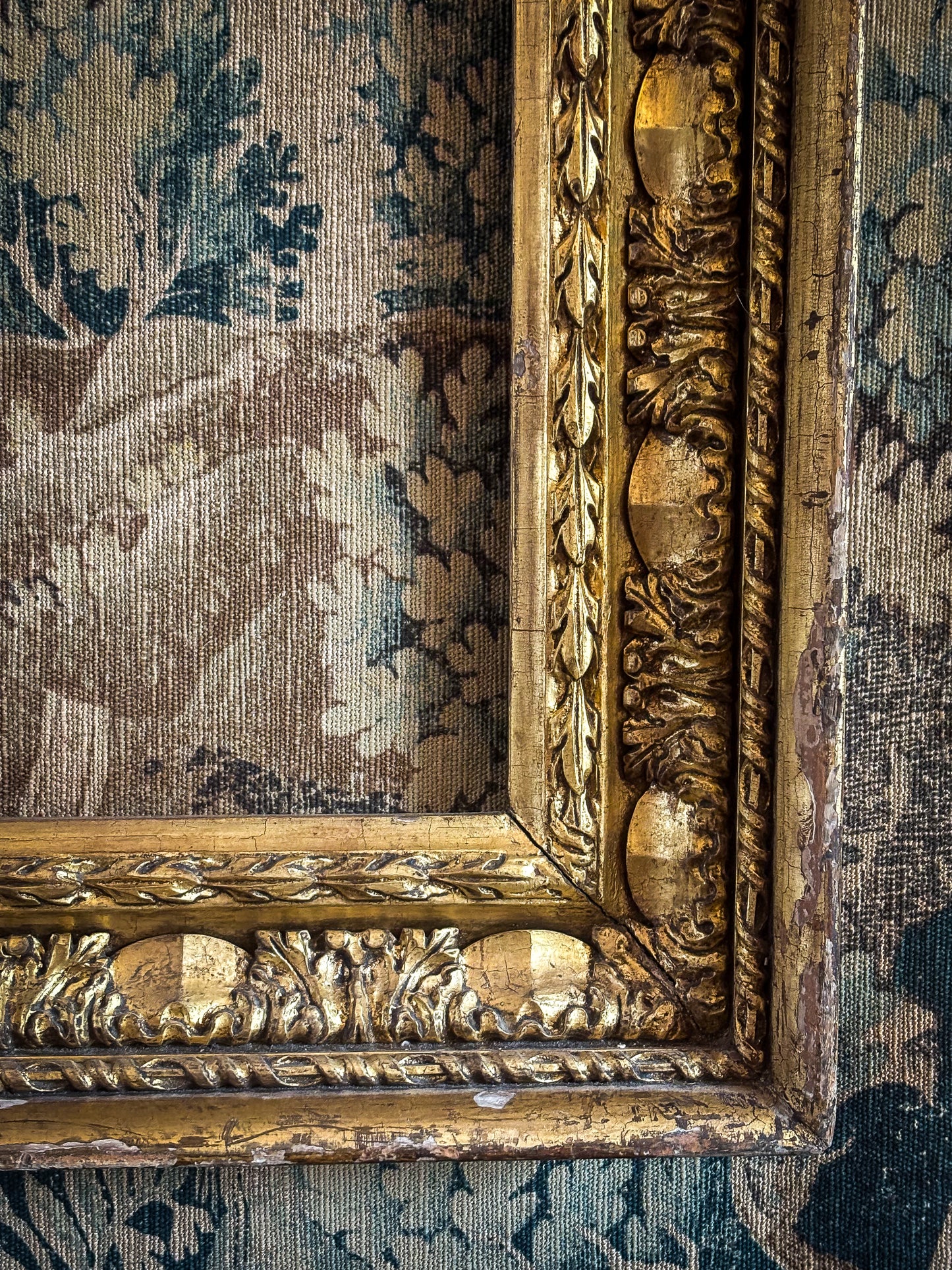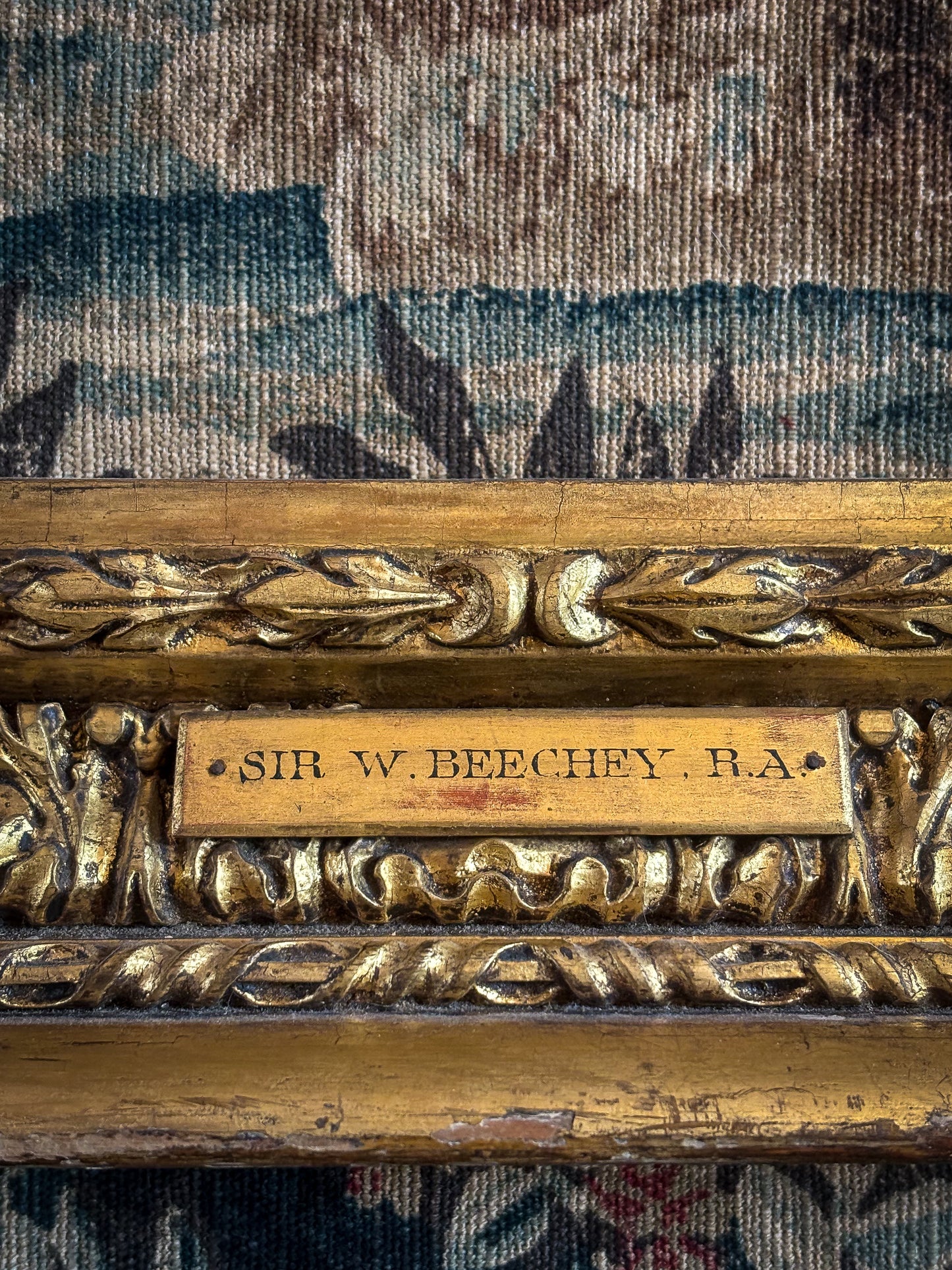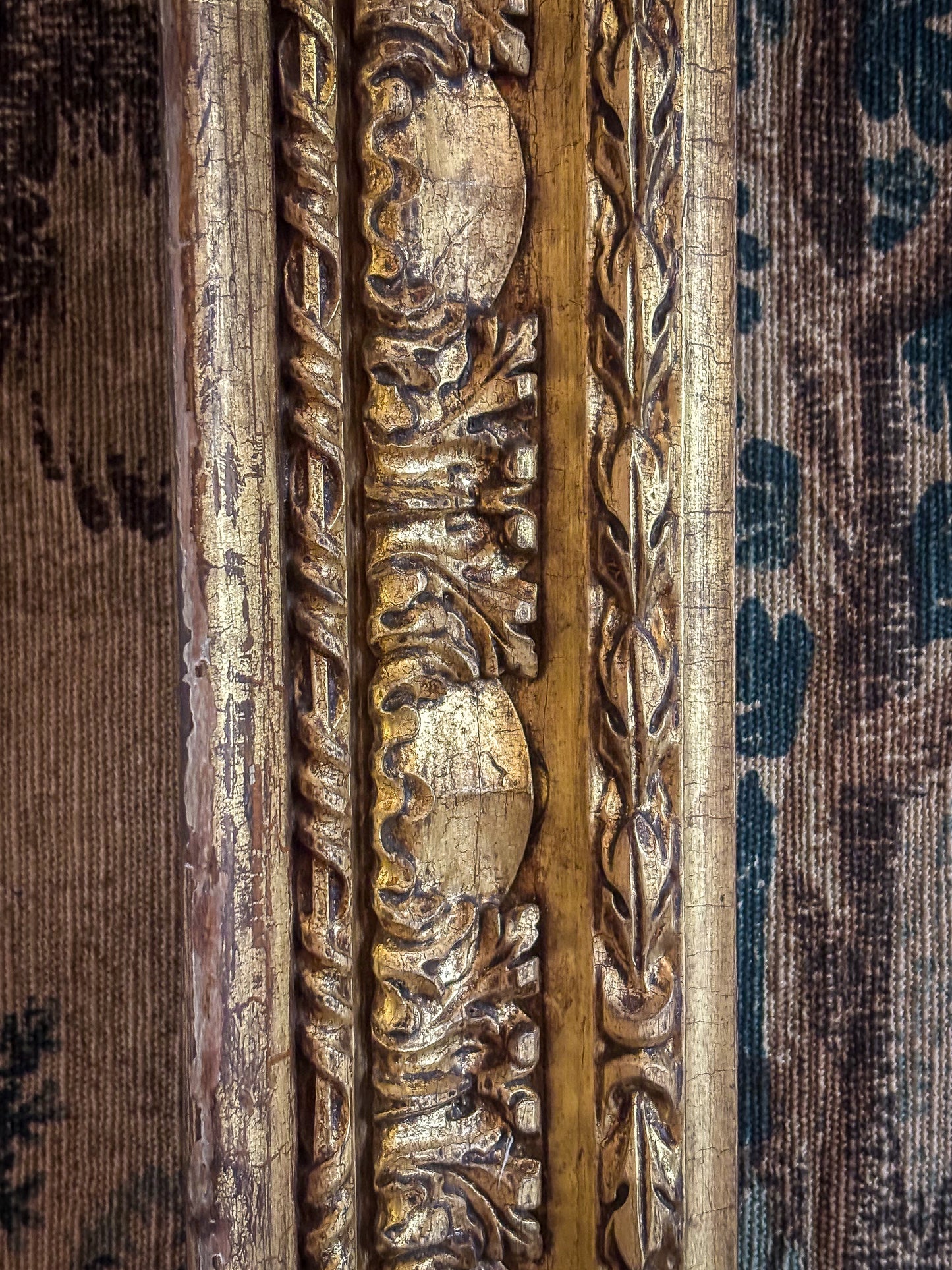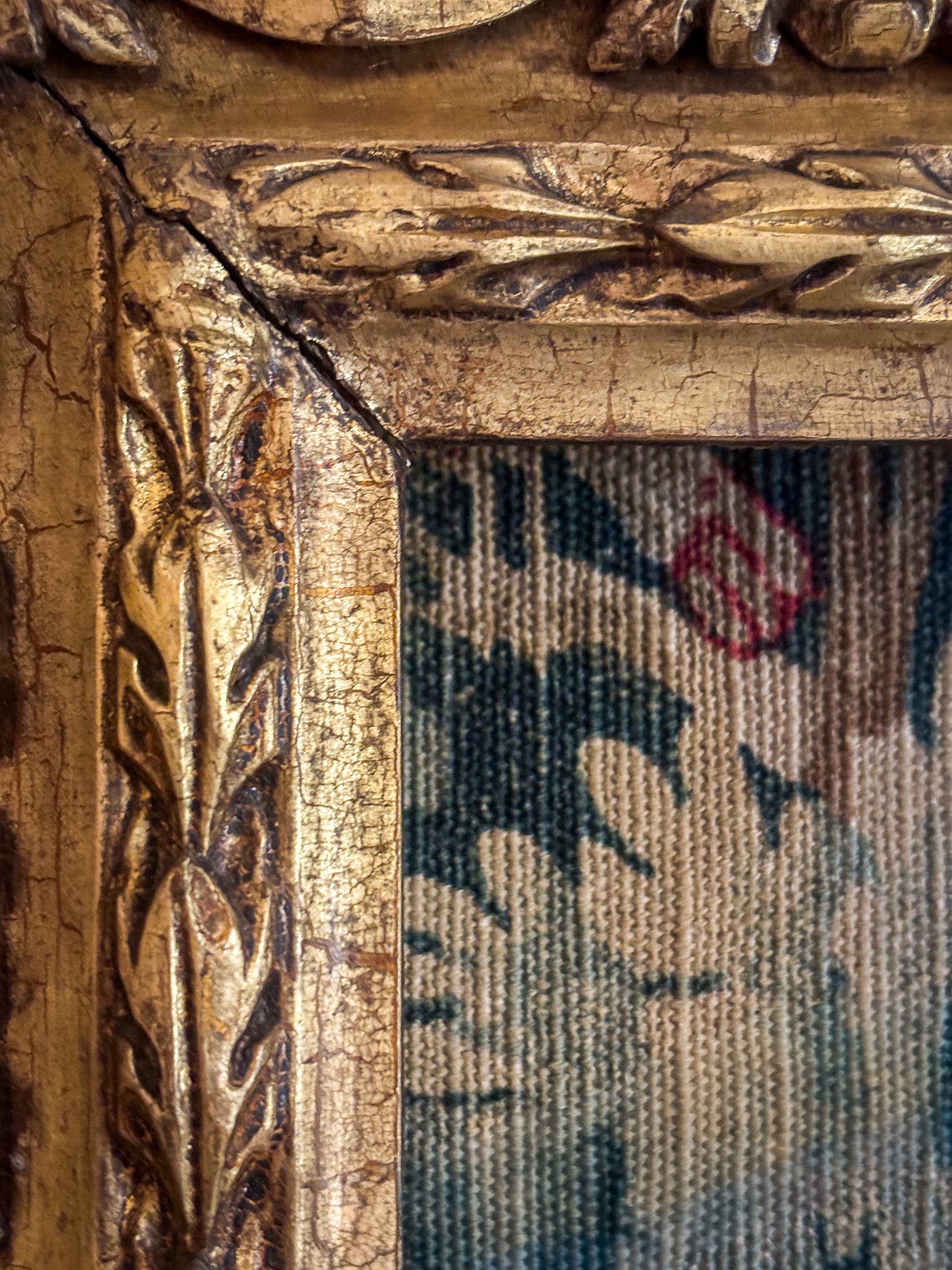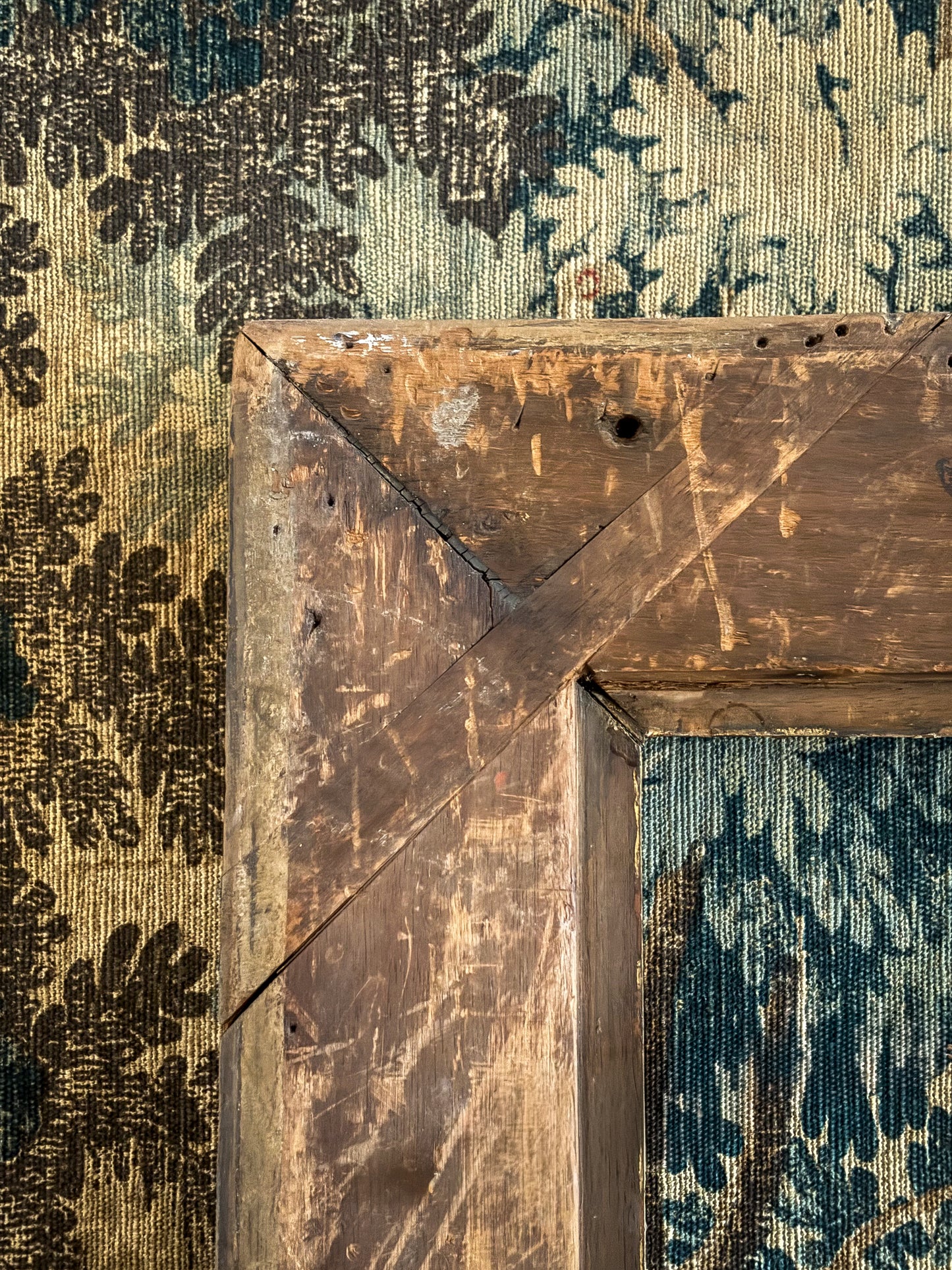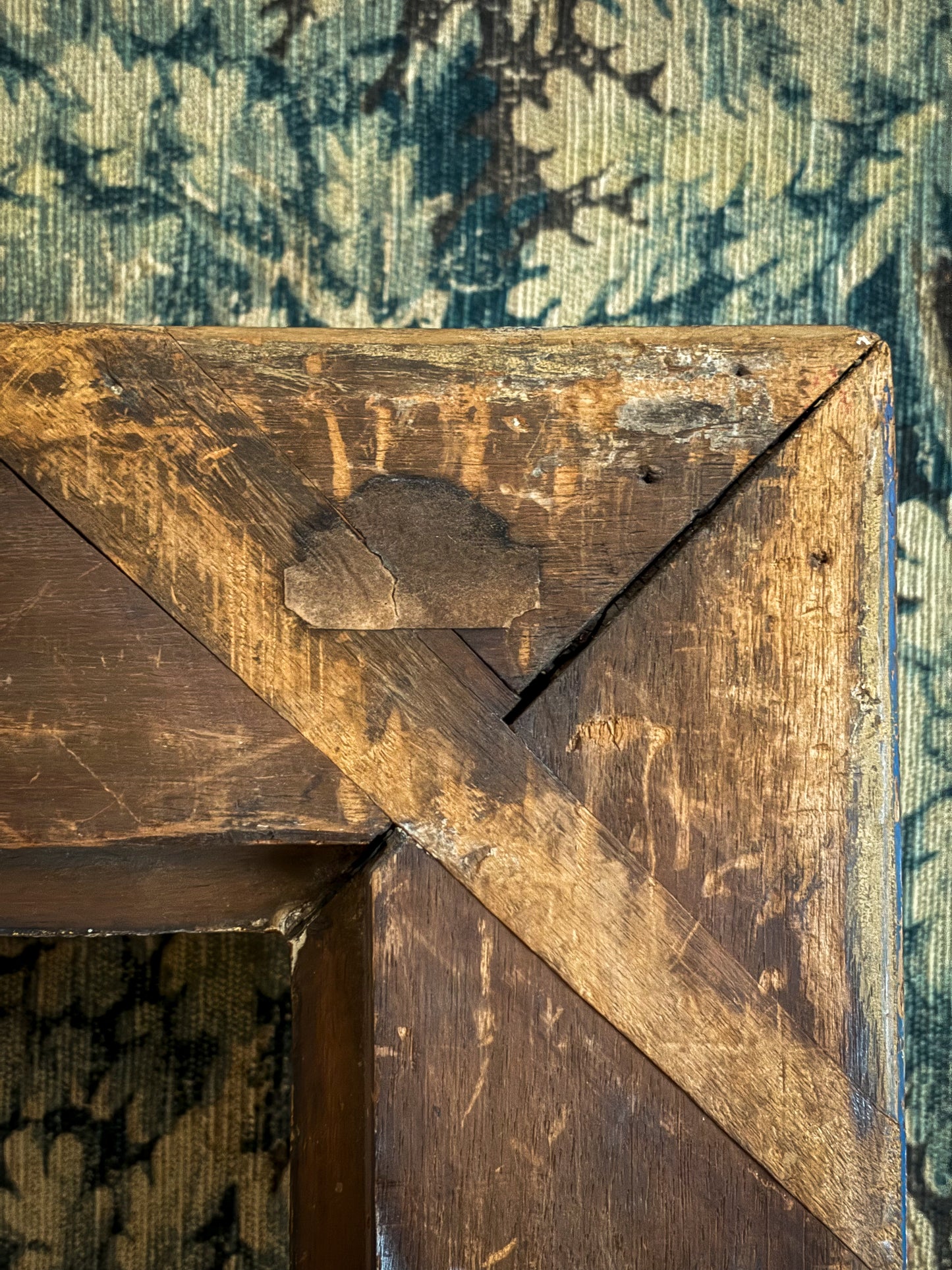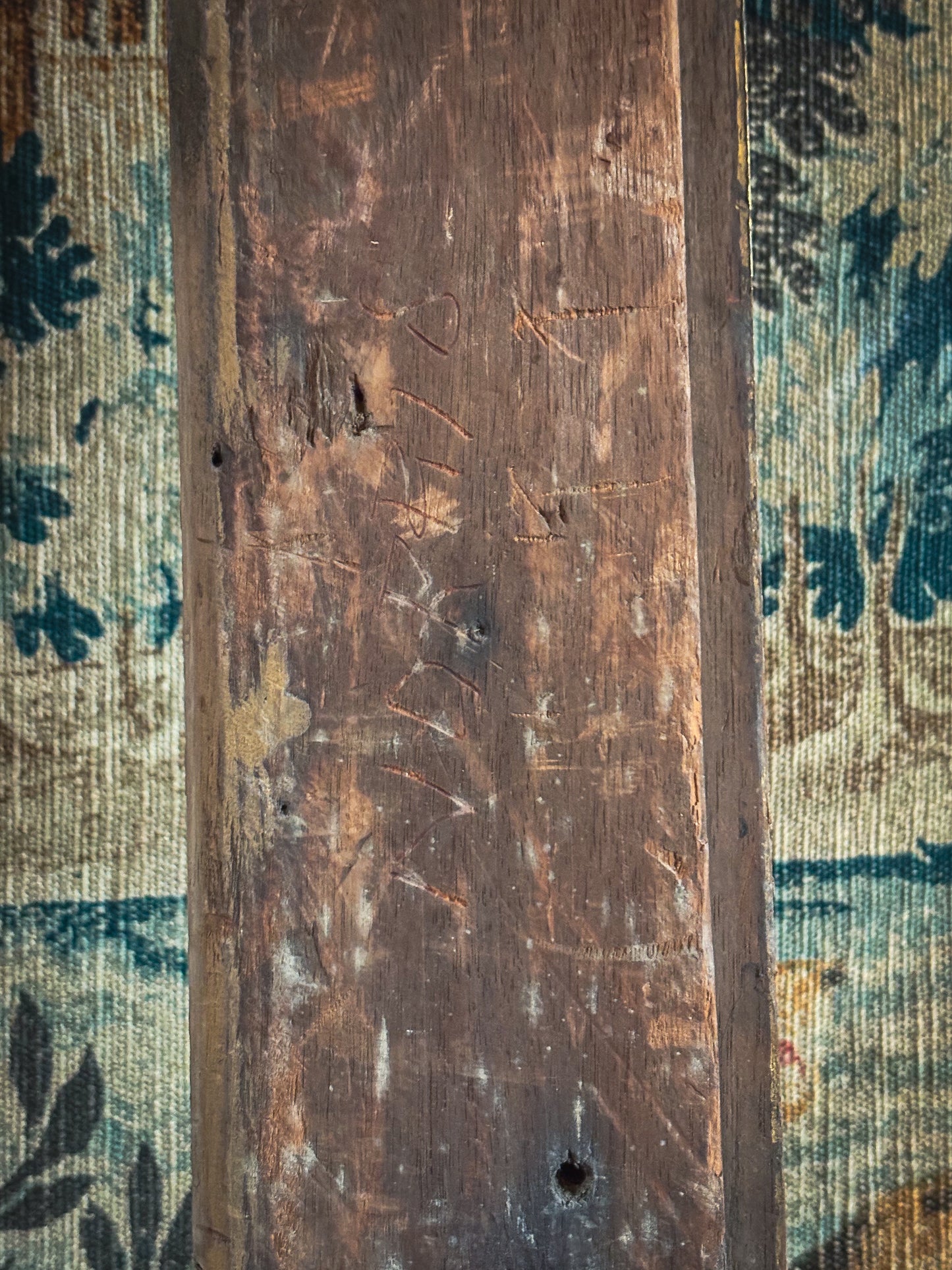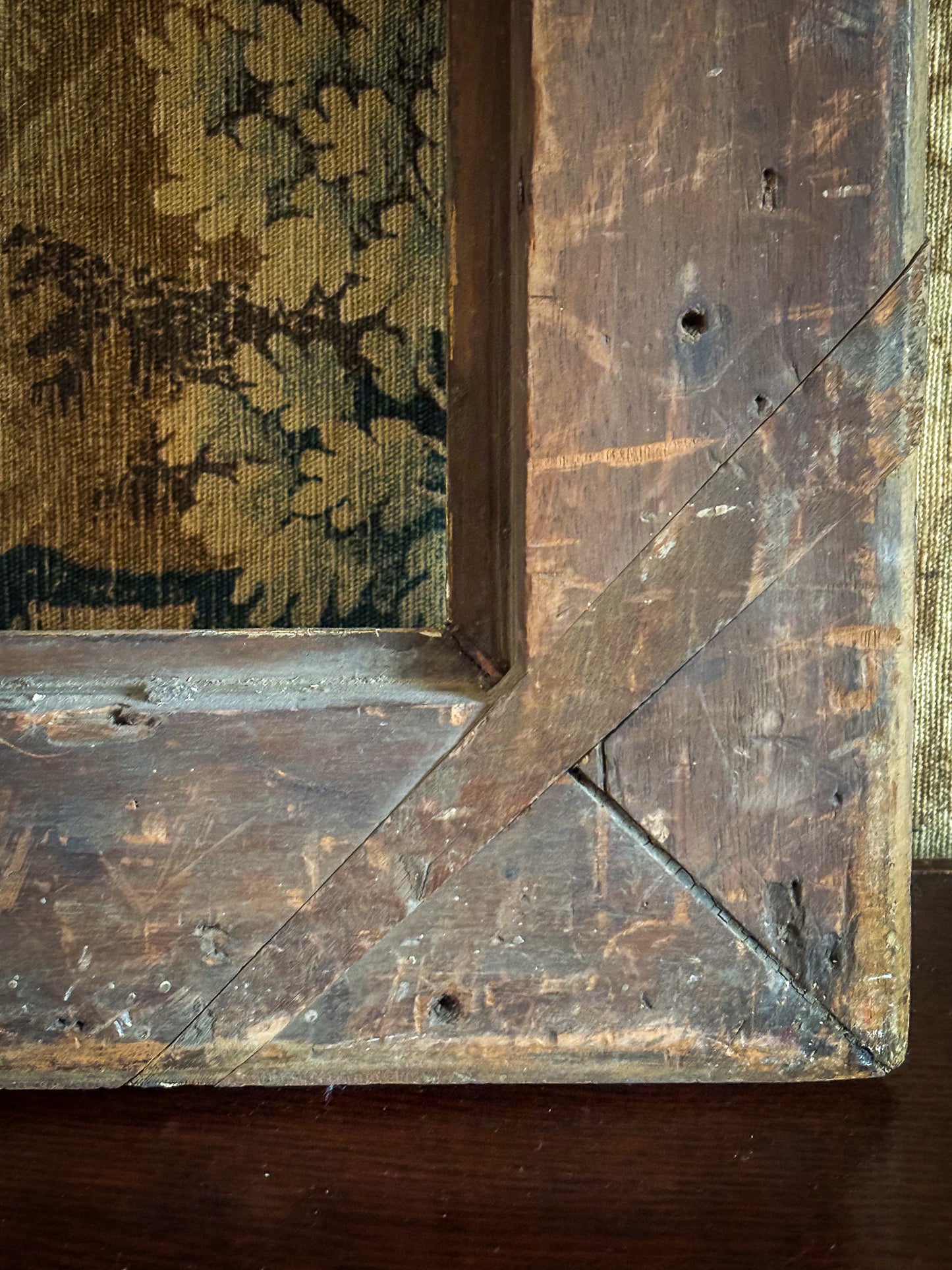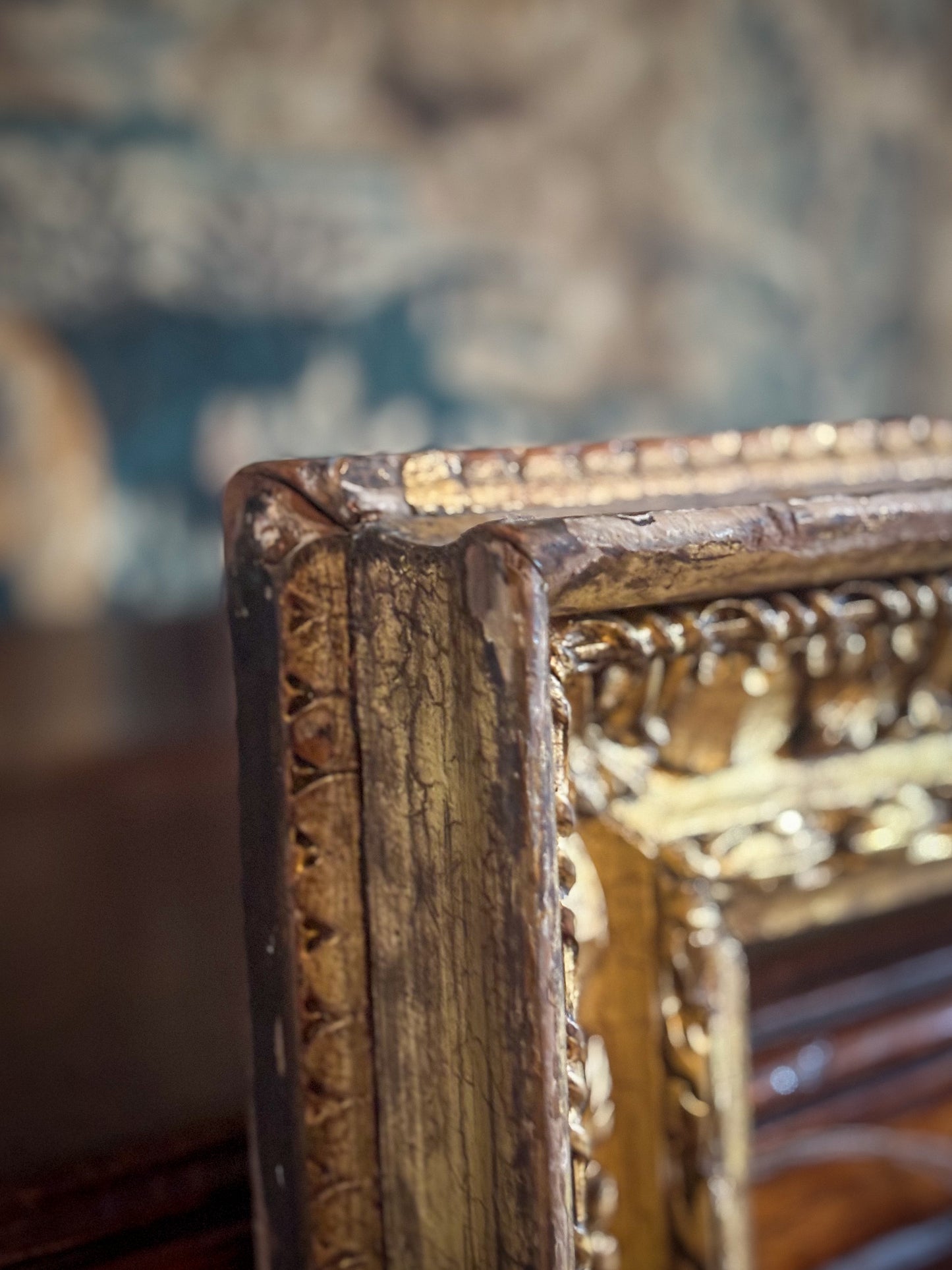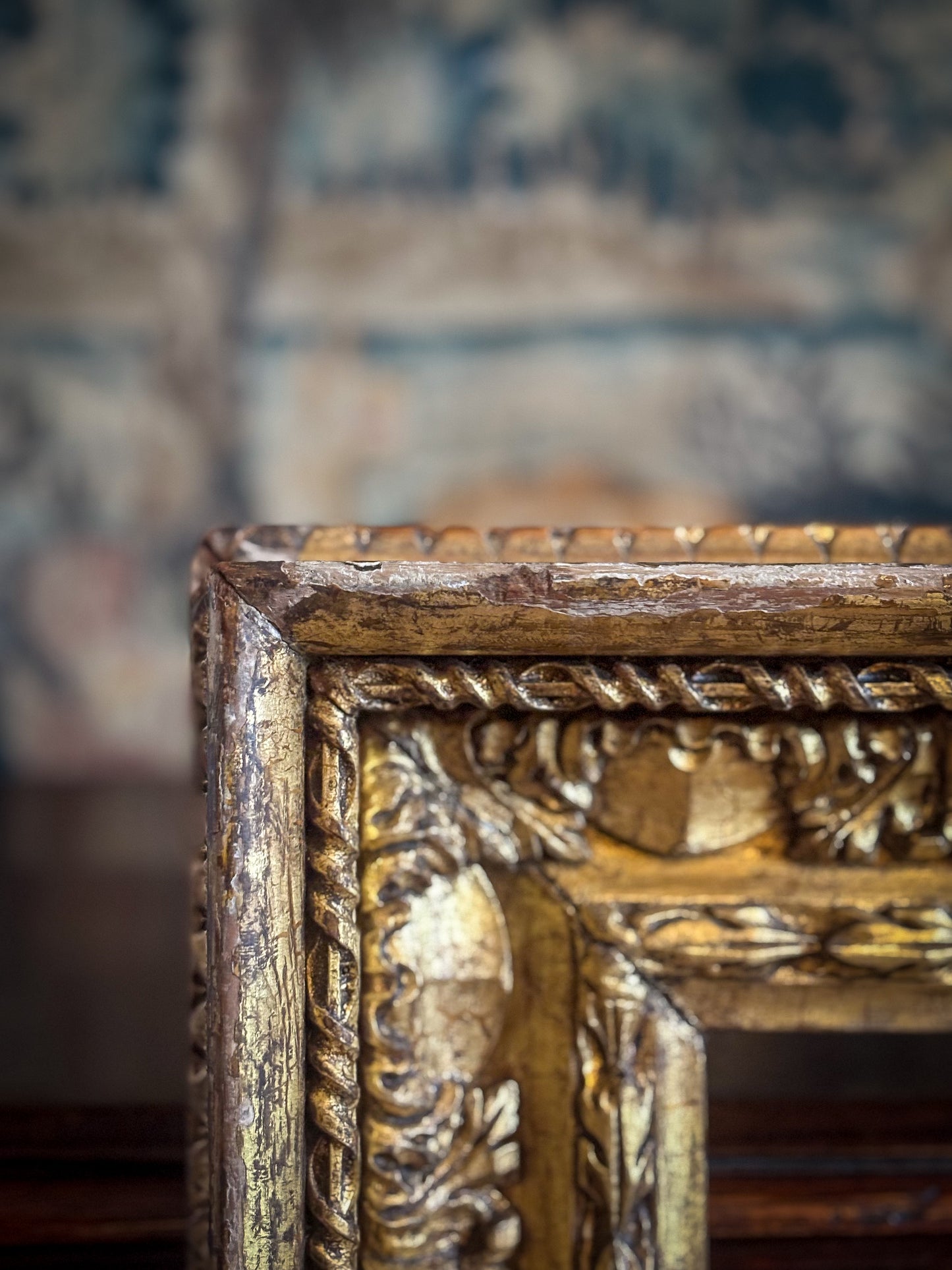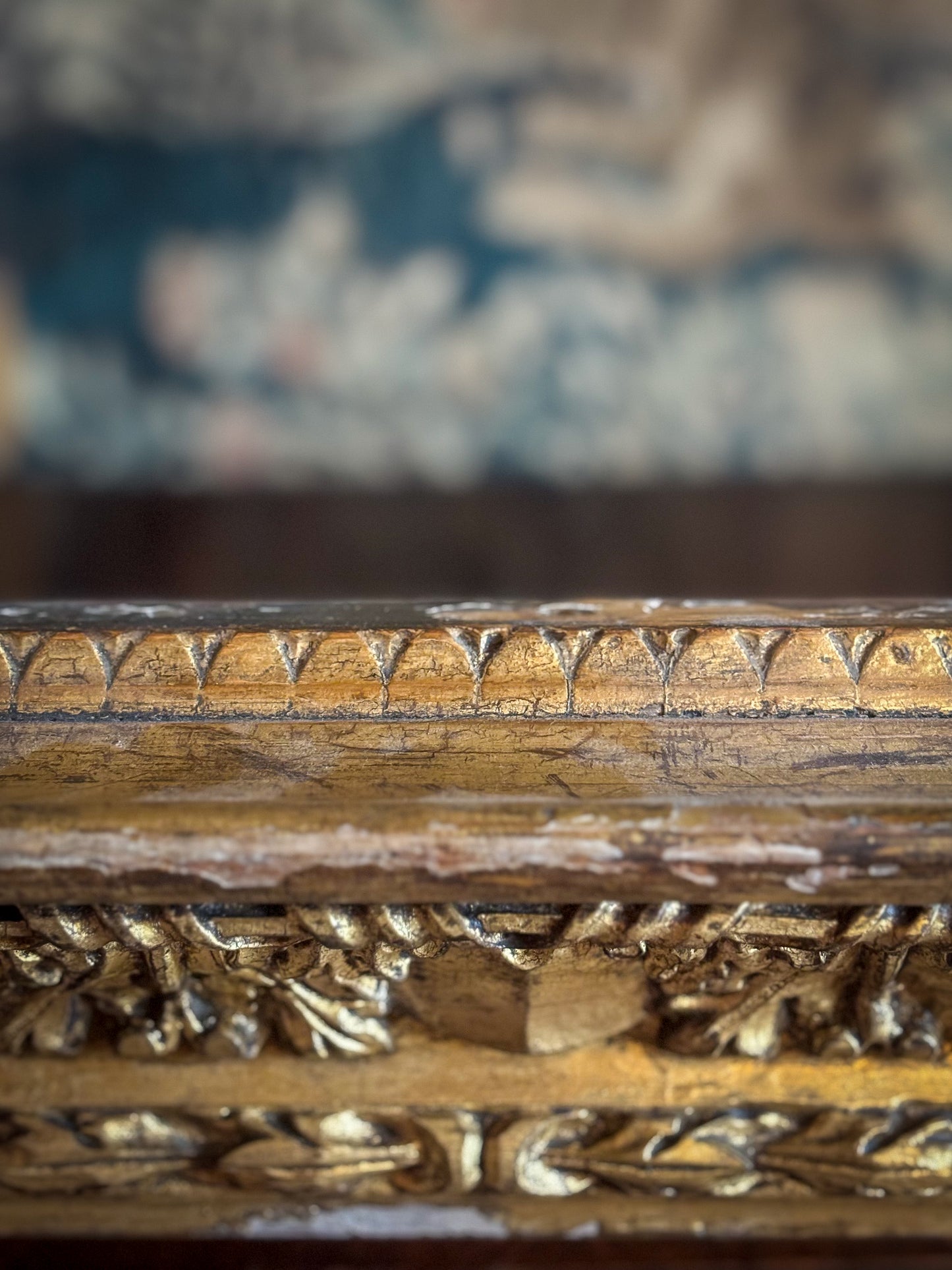Antique 18th Century English Carlo Maratta Giltwood Frame c.1760–80
Couldn't load pickup availability
Fine English Carlo Maratta Frame associated with Sir William Beechey, R.A.
Attributed to John Norris, Carver and Gilder, St Martin’s Lane, London
England, c.1760–1780 (with later nameplate c.1798–1810)
Carved and water-gilded softwood with red bole; hand-painted giltwood nameplate
Frame: 94 × 86 × 7.5 cm
Sight: 76 × 67 cm
A finely carved English Carlo Maratta-profile giltwood frame, the hollow enriched with alternating acanthus-leaf and tongue ornament, a twisted-ribbon sight edge, and an outward-curving top moulding. The gilding is original, laid over a red bole ground, and survives with a mellow surface patina and subtle craquelure.
Affixed to the lower rail is a hand-painted giltwood nameplate reading SIR W. BEECHY · R.A., painted around 1800, shortly after Beechey’s knighthood and election to the Royal Academy.
On the reverse, the incised mark “NORRIS 77” identifies the likely maker as John Norris, a carver and gilder active in St Martin’s Lane during the 1760s–80s. A fragment of an early paper label remains on the backboard, consistent with 18th–early 19th-century framing practice.
The reverse sight (76 × 67 cm) conforms to the Royal Academy’s “large Kit-Cat” portrait format (approx. 30 × 26 in.), used by Beechey, Hoppner and Lawrence for half-length exhibits. The dimensions correspond closely to Beechey’s Self-Portrait (Royal Academy, c. 1793; 750 × 622 mm) and Self-Portrait (Detroit Institute of Arts, 1799; 770 × 630 mm).
Attribution and Context
The frame’s construction and ornament accord with London work of the mid- to late 18th century. John Norris is documented as a carver and gilder in St Martin’s Lane—then the centre of artistic production for Reynolds, Ramsay and Zoffany.
The Carlo Maratta profile, popularised in Rome, became the dominant British framing mode of the Georgian period and was employed for portraits of the royal family and academic exhibits alike. The addition of Beechey’s nameplate situates this example within that continuum: a late-Georgian re-use of a Norris-type frame for a Royal Academy-era portrait.
Comparative Examples
- Self-Portrait of Sir William Beechey R.A., c. 1793, Royal Academy of Arts (750 × 622 mm), Carlo Maratta giltwood frame.
- Self-Portrait of Sir William Beechey, 1799, Detroit Institute of Arts (770 × 630 mm), Carlo Maratta frame.
- Queen Charlotte, Royal Collection Trust RCIN 405700, Carlo Maratta frame carved by Thomas Allwood, c. 1775–80.
Condition
Excellent structural stability; original water-gilded surface largely intact with age-consistent rubbing. Minor losses to leaf tips and sight edge. The frame retains a beautiful untouched patina and period authenticity.
Provenance
- Likely made by John Norris, St Martin’s Lane, London, c. 1777.
- Re-used c. 1798–1810 for a portrait by or associated with Sir William Beechey R.A.
- Private collection, UK.
